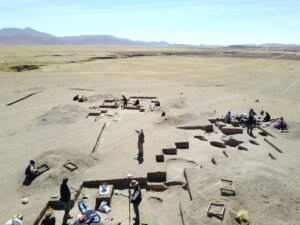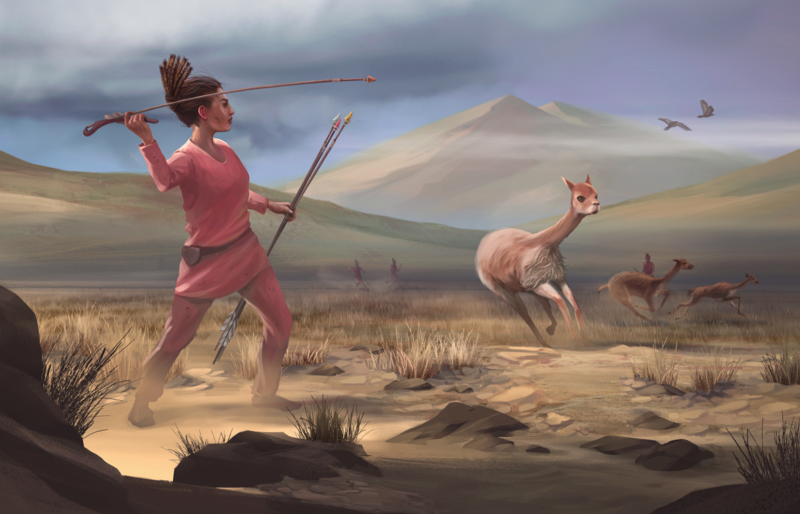Isotopic analysis of the remains of people living 9,000-6,500 years ago in the Andes Mountains of modern-day Peru indicates they were not hunter-gatherers as previously believed but instead would be better categorized as “gatherer-hunters.” That’s because “hunter-gatherers” implies a diet consisting primarily of hunted meat supplemented by a diet of gathered plants, whereas these early Peruvians existed on a diet that was 80% plant-based.
“Conventional wisdom holds that early human economies focused on hunting — an idea that has led to a number of high-protein dietary fads such as the Paleo diet,” explained University of Wyoming Assistant Professor of Archaeology Randy Haas, who led the research effort. “Our analysis shows that the diets were composed of 80 percent plant matter and 20 percent meat.”
Studying Hunter-Gatherers Who Lived Over 12,000 Feet Above Sea Level
To make this determination, Haas joined up with researchers from Penn State University, the University of California-Merced, the University of California-Davis, Binghamton University, the University of Arizona, and the National Register of Peruvian Archaeologists. Together, they analyzed human remains from the Wilamaya Patjxa and Soro Mik’aya Patjxa burial sites in Peru. At 12,877 feet above sea level, this site was occupied by these ancient Peruvians from 9,000-6,500 years ago.


As the lead archaeologist, Haas, says there is ample evidence at these sites that these people did hunt big game for food. However, an isotopic analysis of their remains combined with statistical modeling revealed the surprisingly high concentration of plant matter in their diets. Further supporting these findings were the burned remains of plant matter, as well as dental wear patterns in their upper incisors that reveal they were most likely eating a diet high in plants that grow in the ground, including tubers such as potatoes.
“Our combination of isotope chemistry, paleoethnobotanical, and zooarchaeological methods offers the clearest and most accurate picture of early Andean diets to date,” said Haas. “These findings update our understanding of earliest forager economies and the pathway to agricultural economies in the Andean highlands.”
“Food is incredibly important and crucial for survival, especially in high-altitude environments like the Andes,” adds Jennifer Chen, a Ph.D. student in anthropology at Penn State University and the journal article’s lead author. “A lot of archaeological frameworks on hunter-gatherers, or foragers, center on hunting and meat-heavy diets — but we are finding that early hunter-gatherers in the Andes were mostly eating plant foods like wild tubers.”
More Analysis May Show Archaeologists Elsewhere Also Got it Wrong
In their published study, which appears in the journal PLoS ONE, the researchers point out that this type of study was only made possible with current tools and methods that were not available when archaeologists first posited that people living during this time survived on a diet primarily consisting of meat. They also concede that these findings only apply to the 24 individuals living 9,000 years ago at this particular site.
However, now that tools and methods like isotopic analysis and complex computer modeling do exist, Haas says he believes researchers studying hunter-gatherer tribes from around the world can conduct their own similar analysis. Based on his team’s findings, he believes they may end up needing to redefine their terminology as well.
“Given that archaeological biases have long misled archaeologists — myself included — in the Andes, it is likely that future isotopic research in other parts of the world will similarly show that archaeologists have also gotten it wrong elsewhere,” he said.
Christopher Plain is a Science Fiction and Fantasy novelist and Head Science Writer at The Debrief. Follow and connect with him on X, learn about his books at plainfiction.com, or email him directly at christopher@thedebrief.org.

